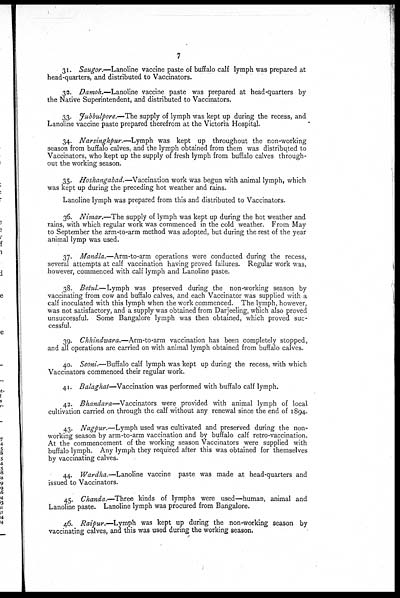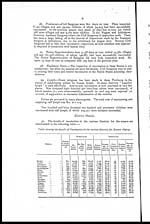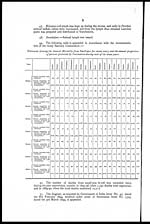Medicine - Vaccination > 1868-1929 - Report on the vaccine operations in the Central Provinces > Vaccine operations Central Provinces 1886-1899 > 1896-1897 - Note on vaccination in the Central Provinces for the season 1896-97
(414) Page 7
Download files
Individual page:
Thumbnail gallery: Grid view | List view

7
31. Saugor.—Lanoline vaccine paste of buffalo calf lymph was prepared at
head-quarters, and distributed to Vaccinators.
32. Damoh.—Lanoline vaccine paste was prepared at head-quarters by
the Native Superintendent, and distributed to Vaccinators.
33. Jubbulpore.—The supply of lymph was kept up during the recess, and
Lanoline vaccine paste prepared therefrom at the Victoria Hospital.
34. Narsinghpur.—Lymph was kept up throughout the non-working
season from buffalo calves, and the lymph obtained from them was distributed to
Vaccinators, who kept up the supply of fresh lymph from buffalo calves through-
out the working season.
35. Hoshangabad.—Vaccination work was begun with animal lymph, which
was kept up during the preceding hot weather and rains.
Lanoline lymph was prepared from this and distributed to Vaccinators.
36. Nimar.—The supply of lymph was kept up during the hot weather and
rains, with which regular work was commenced in the cold weather. From May
to September the arm-to-arm method was adopted, but during the rest of the year
animal lymp was used.
37. Mandla.—Arm-to-arm operations were conducted during the recess,
several attempts at calf vaccination having proved failures. Regular work was,
however, commenced with calf lymph and Lanoline paste.
38. Betul.—Lymph was preserved during the non-working season by
vaccinating from cow and buffalo calves, and each Vaccinator was supplied with a
calf inoculated with this lymph when the work commenced. The lymph, however,
was not satisfactory, and a supply was obtained from Darjeeling, which also proved
unsuccessful. Some Bangalore lymph was then obtained, which proved suc-
cessful.
39. Chhindwara.—Arm-to-arm vaccination has been completely stopped,
and all operations are carried on with animal lymph obtained from buffalo calves.
40. Seoni.—Buffalo calf lymph was kept up during the recess, with which
Vaccinators commenced their regular work.
41. Balaghat—Vaccination was performed with buffalo calf lymph.
42. Bhandara—Vaccinators were provided with animal lymph of local
cultivation carried on through the calf without any renewal since the end of 1894.
43. Nagpur.—Lymph used was cultivated and preserved during the non-
working season by arm-to-arm vaccination and by buffalo calf retro-vaccination.
At the commencement of the working season Vaccinators were supplied with
buffalo lymph. Any lymph they required after this was obtained for themselves
by vaccinating calves.
44. Wardha.—Lanoline vaccine paste was made at head-quarters and
issued to Vaccinators.
45. Chanda.—Three kinds of lymphs were used—human, animal and
Lanoline paste. Lanoline lymph was procured from Bangalore.
46. Raipur.—Lymph was kept up during the non-working season by
vaccinating calves, and this was used during the working season.
Set display mode to: Large image | Zoom image | Transcription
Images and transcriptions on this page, including medium image downloads, may be used under the Creative Commons Attribution 4.0 International Licence unless otherwise stated. ![]()
| Permanent URL | https://digital.nls.uk/91486398 |
|---|
| Attribution and copyright: |
|
|---|




